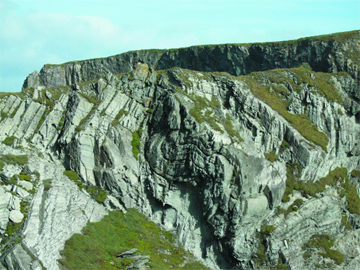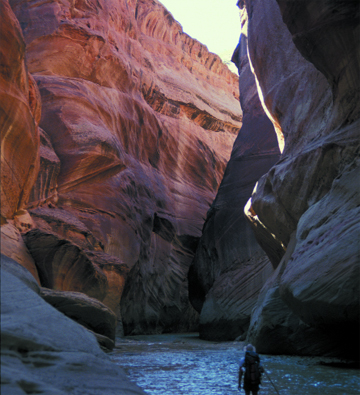Every month, we'd like to feature one of your photos from anywhere in the world and invite other readers to guess where it was taken. Look every month in the print Geotimes for a new photo. Following are clues, answers and winners from past issues.


| Do you have slides and photos you've
collected from field work or vacations? Every month, we'd like to feature one of your photos from anywhere in the world and invite other readers to guess where it was taken. Look every month in the print Geotimes for a new photo. Following are clues, answers and winners from past issues. |
 |
| Send answers for the May 2004 Where on Earth? contest,
which appears in the print magazine, to Geotimes by May 29 (or postmarked
by this date). From those answers, Geotimes staff will draw the names
of 10 people who will win Where on Earth? T-shirts. And from those 10 names,
we will draw the names of two people who will win a Brunton
compass.
Click here
to submit a guess for this month's Where on Earth?
contest. Submit
photos for Where on Earth? |

|
Clues: 2. Viewed from the bridge, this feature is found in a pervasive sandstone unit of Devonian age that is somewhat misleading in nomenclature. 3. The feature hosts a 100-year-old lighthouse that is rumored to be the last light seen by the Titanic.
Name the feature and its location.
Scroll down for the answer |
| Answer: Mizen Head, County Cork, Ireland; Photo by Ken Franklin, Phoenix, Ariz., and courtesy of RJ Gauthier-Warinner in Arlington, Va. |
March Winners
1. Bryan Huff (Champaign, Ill.)

|
Clues: 1. Seven different geologic sandstone formations mark this feature, revealing
200 million years of geologic history. Large crossbeds exhibit colorful
banding in yellow, orange, pink and red caused by the precipitation of
manganese, iron and other oxides. 2. The silt-laden river that has sculpted this feature is named for a native word meaning “muddy water,” referring to the frequent flash floods during which tributaries run reddish-orange. 3. Ancient petroglyphs, campsites and ruins indicate that early people traveled here more than 700 years ago. In more recent times, the feature has served as a backdrop to many movies, including one about an infamous outlaw. Name the feature and its location. Scroll down for the answer |
| Answer: Paria Canyon in Utah and Arizona. Photo submitted by Keith Meldahl. |
Check back later this month to find out who won
April's Where on Earth? contest.
 |
Geotimes Home | AGI Home | Information Services | Geoscience Education | Public Policy | Programs | Publications | Careers |